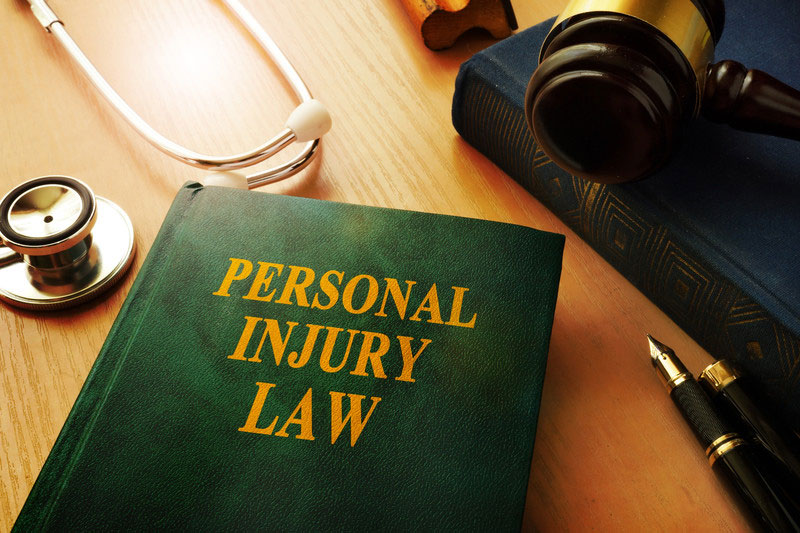Understanding legal terminology is essential when handling personal injury cases. Attorneys, medical review companies, insurance adjusters, plaintiffs and defendants need to be familiar with common personal injury terms because it can simplify the litigation process and enhance communication. This glossary of personal injury legal terms provides simple definitions to help you navigate the complexities of personal injury litigation.
Benefit from dedicated medical record review services for your personal injury case.
Important Legal Terms Related to Personal Injury Cases
Abstract of Title
A record of all legal documents related to a piece of real property, including transfers, liens, and legal actions. This is important in premises liability cases.
Accident Report
An official documentation of an incident, typically prepared by law enforcement or hospital staff, necessary for initiating a personal injury claim.
Act of God
Refers to natural events like earthquakes or pandemics not caused by human negligence. Often used in determining liability.
Activities of Daily Living (ADLs)
Everyday tasks like bathing and dressing used to gauge injury impact, especially in functional capacity evaluations.
Acute vs. Chronic
Describes injury duration: immediate (acute) vs. ongoing or recurring (chronic), often used in medical chronologies.
Aggravation
The worsening of a pre-existing condition due to an accident or traumatic event.
Alternative Dispute Resolution (ADR)
This term refers to mechanisms such as mediation or arbitration used to resolve a personal injury lawsuit without trial. ADR helps reduce litigation costs as well as time.
Appeal
A formal request for a higher court to review a lower court’s decision. Appeals are usual in personal injury litigation when the verdict is disputed.
Arbitration
An out-of-court resolution involving an unbiassed third party. It is part of alternative dispute resolution strategies.
Assignment of Benefits (AOB)
Authorizes a third party (e.g. medical provider) to handle insurance claims and collect payments on behalf of the injured party.
Bad Faith Claim
A lawsuit filed against an insurer for unjustly denying or delaying an insurance claim—central to insurance litigation.
Billing Summary
A breakdown of the medical costs, often included in a medical summary or legal medical chronology.
Bodily Injury
Physical harm due to accident or negligence; it is a key term in personal injury protection (PIP) and liability claims.
Burden of Proof
The obligation of the plaintiff to prove that the defendant’s negligence caused injury.
Causation
The direct link between the act of negligence and the sustained injury, establishing legal responsibility or liability.
Comparative Negligence
A rule that reduces a plaintiff’s damages based on their share of fault. Used in many state personal injury laws.
Claim Adjuster
An insurance representative who evaluates injury claims and negotiates settlements with the plaintiff or their attorney.
Compensatory Damages
Monetary awards for actual losses such as medical bills, lost wages, and property damage.
Contingency Fee
The payment arrangement where a personal injury lawyer is paid only if the case is successful—typically a percentage of the settlement.
Contusion
A bruise or injury where blood vessels rupture under the skin, frequently documented in accident reports.
Damages
A broad term that includes economic damages and non-economic damages like pain and suffering.
Demand Letter
A formal notice asking the at-fault party to compensate the injured party before filing a personal injury case.
Deposition
Testimony given under oath during the discovery process and summarized for legal use in deposition summary services.
Discovery
The legal process of exchanging evidence and documentation, crucial for building a strong personal injury case.
Duty of Care
A legal obligation that requires individuals to exercise reasonable care. Breaching it can lead to negligence claims.
Economic Damages
Financial compensation for quantifiable losses like treatment costs, future medical needs, and lost income.
Exacerbation
A temporary intensification of a chronic condition due to the triggering event or accident.
Expert Witness
A specialist who gives testimony based on their medical or technical expertise during litigation.
Fraudulent Misrepresentation
False statements that result in financial harm—especially important in insurance disputes.
Functional Capacity Evaluation (FCE)
A medical examination to determine whether a person can return to work after an injury.
Future Medical Needs
Projected future healthcare costs due to long-term injuries. It is considered as a prime factor during settlement negotiations.
Good Samaritan Law
Laws protecting those who voluntarily help accident victims from liability.
Gross Negligence
Severe carelessness showing disregard for others’ safety. It could trigger punitive damages.
Insurance Adjuster
Like a claim adjuster, they evaluate the validity and value of a personal injury claim.
Intentional Tort
Includes deliberate harm such as assault, relevant in cases involving both civil and criminal liability.
Liability
Legal obligation to compensate for injuries caused — central to all personal injury law.
Loss of Consciousness (LOC)
A common metric in traumatic brain injury (TBI) assessments.
Loss of Consortium
Compensation for the loss of companionship or intimacy due to a partner’s injury.
Maximum Medical Improvement (MMI)
The point at which a patient is not expected to improve further, even with continued medical care.
Mediation
A non-adversarial dispute resolution option, helpful in complex accident injury claims.
Mechanism of Injury (MOI)
The physical process that caused the injury, used to establish causation.
Medical Chronology
A timeline of medical events, made by legal nurse consultants or medical review companies/experts to support litigation.
Medical Summary
A condensed version of a client’s medical history relevant to the claim.
Negligence
Failure to act with reasonable care, the most important factor in proving fault in personal injury lawsuits.
No-fault Insurance
Covers injury-related expenses regardless of fault. Common in auto accident claims under PIP laws.
Non-economic Damages
Includes imperceptible losses like emotional distress and reduced quality of life.
Onset Date
The date when symptoms began, typically used to assess claim validity and causation.
Pain and Suffering
A major component of non-economic damages in injury settlements.
Permanent Partial Disability (PPD)
A lasting impairment that partially limits a person’s ability to function or work.
Personal Injury Protection (PIP)
A component of no-fault insurance covering medical costs after the accident, even when fault isn’t determined.
Pre-existing Condition
A medical concern that is present before the accident. It may affect the value or outcome of a personal injury claim.
Premises Liability
A legal concept holding property owners responsible for injuries occurring on their premises.
Punitive Damages
Awarded in extreme cases to punish egregious behavior and deter future negligence.
Quantum Meruit
A Latin term meaning “as much as he deserves”; used in legal contexts where a formal contract is missing.
Release of Liability
A signed agreement that waives the right to pursue further legal action after a settlement is reached.
Residual Deficit
Ongoing symptoms or impairments after initial treatment ends.
Res Ipsa Loquitur
A doctrine suggesting negligence is obvious due to the nature of the accident.
Return to Work (RTW) Status
The stage at which an injured person can resume job responsibilities, typically assessed via FCE.
Statute of Limitations
The legal time limit within which a personal injury lawsuit must be filed.
Strict Liability
Applies in product liability and other cases where fault doesn’t need to be proven.
Subjective vs. Objective Findings
Subjective is what the patient feels; Objective is what the clinician observes.
Underinsured Motorist Coverage (UIM)
Insurance that steps in when the at-fault party has insufficient insurance coverage.
Uninsured Motorist Coverage (UM)
Protects policyholders injured by uninsured drivers.
Vicarious Liability
Legal doctrine holding one party responsible for another’s negligence (e.g. employers for employees).
Vocational Rehabilitation
Services that help injured individuals return to suitable employment.
Wrongful Death
A death caused by negligence or misconduct. Family members or beneficiaries may sue for compensation.
Why Understanding Personal Injury Legal Terms Is Vital
Whether you’re filing a personal injury lawsuit, evaluating compensatory damages, or negotiating with a claim adjuster, understanding the legal terms used in personal injury cases is crucial. With this knowledge, attorneys, legal assistants, and claimants can engage more effectively throughout the litigation process.
Legal professionals and personal injury law firms utilize medical review services to streamline case analysis. Medical review professionals create detailed medical chronologies, billing summaries, and ensure accurate use of personal injury legal terminology.
Customized medical review solutions for personal injury attorneys.




